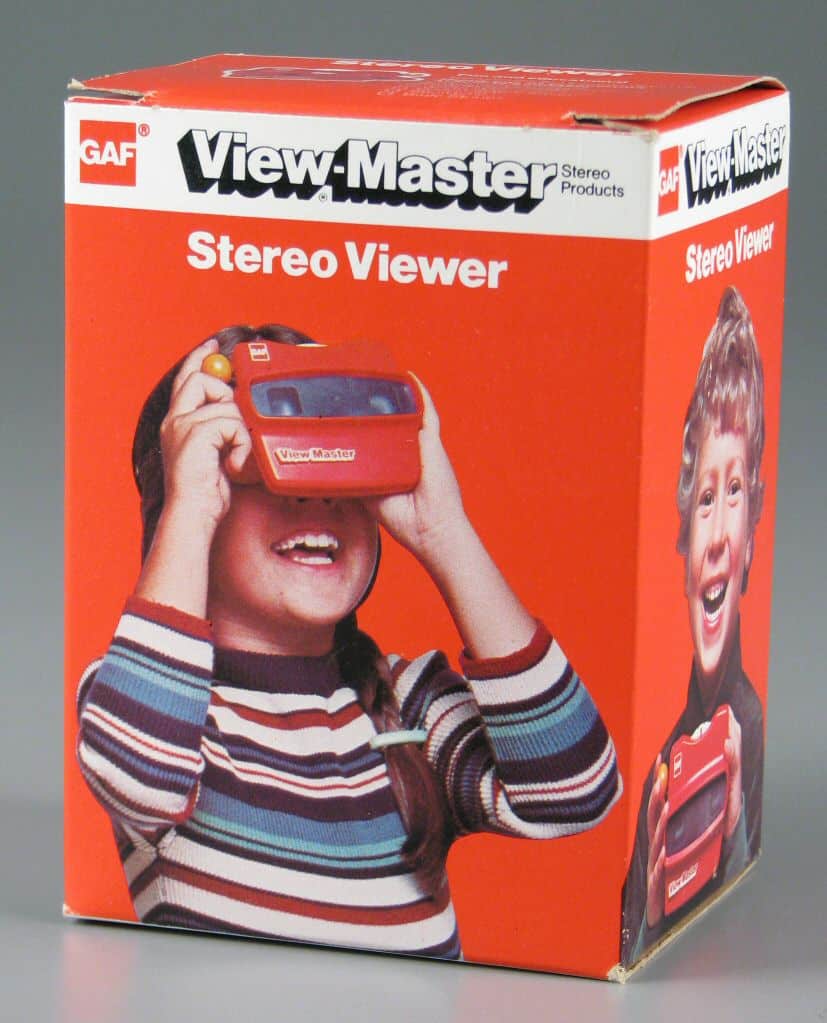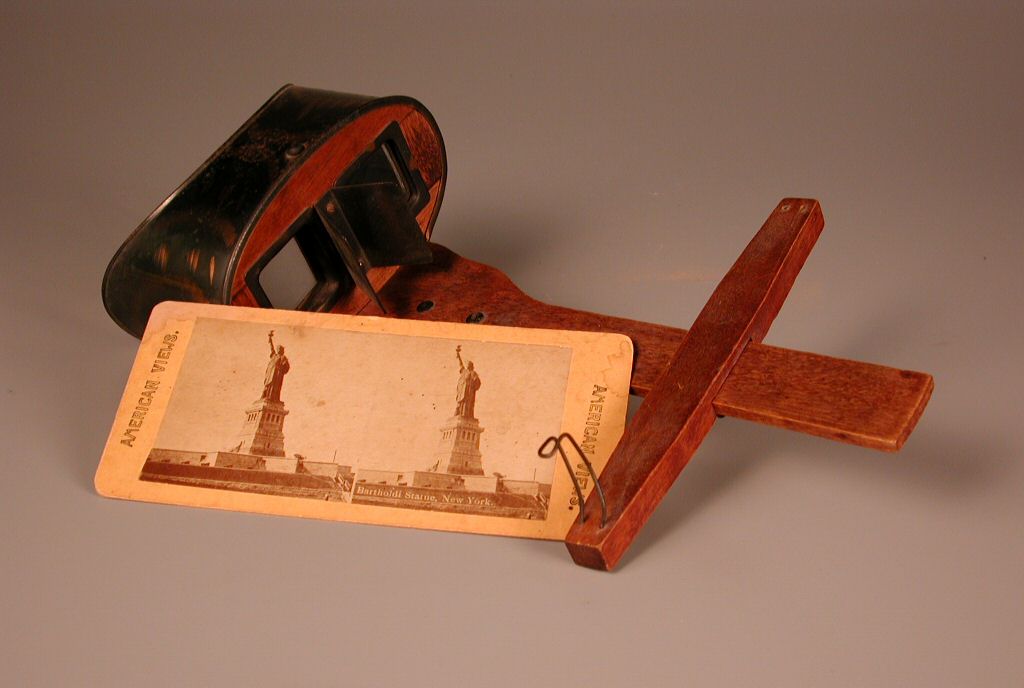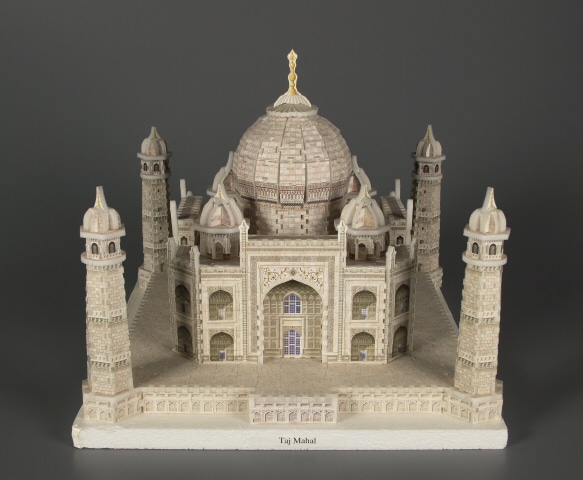 Is it me, or does there seem to be a renewed interested in 3-D films? Are there any movies that aren’t being released in 3-D? The popularity of the medium recently encouraged me to think more about why visual trickery fascinates so many people. As it turns out, our interest is hardly a fleeting trend. For decades, people have found themselves mystified, intrigued, and amused by a bevy of optical toys and illusions.
Is it me, or does there seem to be a renewed interested in 3-D films? Are there any movies that aren’t being released in 3-D? The popularity of the medium recently encouraged me to think more about why visual trickery fascinates so many people. As it turns out, our interest is hardly a fleeting trend. For decades, people have found themselves mystified, intrigued, and amused by a bevy of optical toys and illusions.
 For instance, the stereoscope—a popular form of home entertainment technology introduced around 1850—allowed individuals to view photographs in what appeared to be three dimensions thanks to a carefully crafted viewing device and specially designed stereo cards, also known as stereographs. Both applied the concept of stereoscopic vision: two similar images placed side by side and seen as one three-dimensional image through the combined vision of a person’s left and right eyes. The same technology later evolved into a more compact, child-friendly version with the introduction of the View-Master in 1939, a toy whose popularity and longevity earned it a spot in the National Toy Hall of Fame in 1999.
For instance, the stereoscope—a popular form of home entertainment technology introduced around 1850—allowed individuals to view photographs in what appeared to be three dimensions thanks to a carefully crafted viewing device and specially designed stereo cards, also known as stereographs. Both applied the concept of stereoscopic vision: two similar images placed side by side and seen as one three-dimensional image through the combined vision of a person’s left and right eyes. The same technology later evolved into a more compact, child-friendly version with the introduction of the View-Master in 1939, a toy whose popularity and longevity earned it a spot in the National Toy Hall of Fame in 1999.
Years before the stereoscope, humans delighted in the vivid, multi-colored forms found when gazing into a kaleidoscope. Invented around 1815, early kaleidoscopes consisted of a series of small mirrors and colorful beads housed inside a cylindrical viewer. Users peered through one end while slowly turning the device, causing the beads to shift, creating countless whimsical, colorful formations. Kaleidoscopes have remained popular since then and come in a variety of shapes, sizes, and materials, ranging from cardboard dime store versions to those made of precious gems and metals.
In the 1950s, movie patrons could experience the stories and characters of the silver screen in a new way: 3-D. Moviegoers enthusiastically accessorized themselves with those now iconic red and blue glasses and immediately loved what they saw through the colored lenses. Despite the excitement of characters leaping out of the screen, the 3-D craze—like all trends—eventually faded, but it experienced a resurgence in the 1980s and 1990s thanks to IMAX theatres. Today, 3-D movies are bigger than ever, with new films of every genre being released in 3-D, as well as older films that have been reformatted. Plus, those requisite 3-D glasses have been revamped, so movie goers look hipper than ever.
 If you’re interested in three-dimensional visual effects but don’t have the time or patience to sit through a full-length feature film, perhaps Magic Eye art is the way to go? At first glance, Magic Eye images might look like colorful two-dimensional patterns, but for many folks they’re much more—after a few seconds of staring, the viewer’s vision diverges and a three-dimensional image emerges from the print. During the 1990s, Magic Eye books, posters, and calendars were sold at a host of venues, although most of us probably remember seeing them showcased at freestanding shopping mall booths with a squinting crowd perpetually huddled around the perimeter. I never quite got the hang of Magic Eye art (I still feel as though I missed out on something), but did catch on to 3-D puzzles pretty quickly.
If you’re interested in three-dimensional visual effects but don’t have the time or patience to sit through a full-length feature film, perhaps Magic Eye art is the way to go? At first glance, Magic Eye images might look like colorful two-dimensional patterns, but for many folks they’re much more—after a few seconds of staring, the viewer’s vision diverges and a three-dimensional image emerges from the print. During the 1990s, Magic Eye books, posters, and calendars were sold at a host of venues, although most of us probably remember seeing them showcased at freestanding shopping mall booths with a squinting crowd perpetually huddled around the perimeter. I never quite got the hang of Magic Eye art (I still feel as though I missed out on something), but did catch on to 3-D puzzles pretty quickly.
Today, special effects and visual entertainment are richer and more tantalizing than ever in film, television, electronic games, and other media. Do we really need optical illusions and special effects to amuse ourselves? After all, we live in a three-dimensional world, surrounded by all sorts of wondrous things—no funky glasses required.



